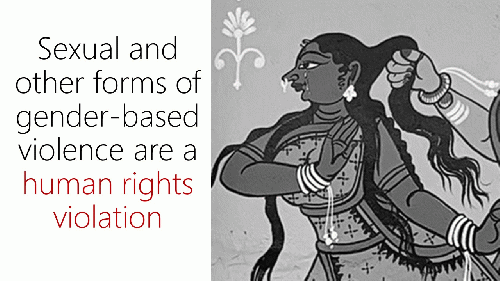"There is a global epidemic of violence against women - both within conflict zones and within societies at peace - and it is still treated as a lesser crime and lower priority," said Angelina Jolie, actress and then UN Ambassador for refugees more than five years ago. With the onslaught of the pandemic and global public-health emergency and cascading humanitarian crises, these words have only become even more relevant today.
The Asia-Pacific region presents some very challenging development indicators for women and girls and socially excluded and marginalized populations. There are deep-rooted gender inequalities and discriminatory socio-cultural norms and practices arising out of patriarchal systems and structures, and sexual and other forms of gender-based violence continues to remain pervasive in the region.
According to latest statistics, the proportion of women in Asia Pacific who have experienced physical or sexual violence by an intimate partner in their lifetime ranges from 15% in Bhutan, Japan, Lao PDR and Philippines to 64% in Fiji and Solomon Islands. Also 4% (in Japan) to 48% (in Papua New Guinea) of women have experienced intimate-partner violence in the last 12 months.
Also, in most countries of the region, women are much more likely to have experienced physical or sexual violence at the hands of intimate partners, rather than by other perpetrators. Thus women who are experiencing violence are unable to find ways to stop the violence or to leave the violent relationship. Moreover, many communities often stigmatise survivors and perceive some practices, like domestic violence, as acceptable.
Several studies have shown that sexual and other forms of gender-based violence, which is perpetuated by poverty and various gender-biased sociocultural norms and values, escalates in crises situations. The findings of one such study conducted in Central Sulawesi, Indonesia, as shared by Melania Hidayat, National Programme Officer on Reproductive Health, UNFPA, Indonesia, reveal that incidents of sexual and other forms of gender-based violence, sexual harassment, rape and domestic violence increased in the aftermath of a natural disaster (earthquake followed by landslide). However, the general reaction of the survivors was to remain silent due to fear (of the perpetrators), shame and lack of support from immediate family members. They often have to bear the double burden of sanctions and blame from the community as well.
Hidayat rues that even humanitarian workers, programme managers or service providers do not see prevention and management of sexual and other forms of gender-based violence as a priority in emergency humanitarian responses and the mechanism for reporting and management of sexual and other forms of gender-based violence does not exist. At the same time, community awareness and understanding is also low, which tends to put the survivor to further risks of violence.
Then again, as the UN Secretary General has very rightly and repeatedly said, the global lockdowns during the COVID-19 pandemic have resulted in a "horrifying surge" in the already existing gender-based violence, further deepening gender inequalities.
The heightened risk of sexual and other forms of gender-based violence for women and girls due to the pandemic has deeply affected the Asia-Pacific region as well. It has placed additional barriers to operationalize many of the existing prevention strategies, thus limiting the ability of survivors of sexual and other forms of gender-based violence to distance themselves from their abusers and/or to access life-saving services related to sexual and other forms of gender-based violence.
(Note: You can view every article as one long page if you sign up as an Advocate Member, or higher).






